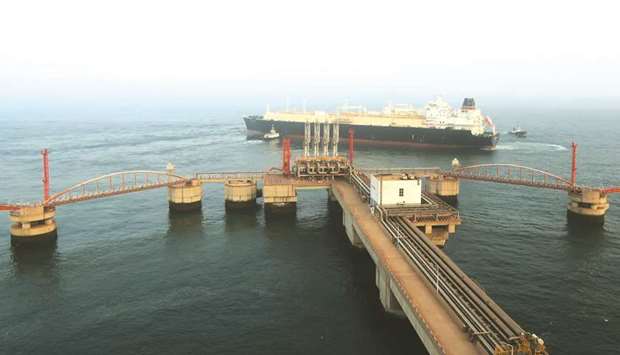China has helped support the International Energy Agency’s vision of a “golden age of gas” over the past two years, but growth will likely slow in the next five years.
Natural gas demand will rise 1.6% annually to 2024, driven mainly by higher use of the fuel in industry, the Paris-based IEA said in its Gas 2019 report. While this outlook is unchanged from the previous year, it contrasts with a 4.6% increase in consumption last year, the fastest pace since 2010, driven by a weather-driven increase in the US and clean-air policies in China.
“Strong growth is unlikely to be the norm in the future because of slowing economic growth, declining potential for switching from coal to gas, and a return to average weather conditions after last year’s exceptionally hot summer in the northern hemisphere,” the IEA said. “China is expected to account for more than 40% of global gas demand growth to 2024, propelled by the government’s goal to improve air quality.”
Asia will drive consumption, led by China with an 8% average annual increase. After government policies to replace coal saw gas demand jump 14.5% in 2017 and 18.1% in 2018, that will slow to 9.1% this year as the nation’s economic growth decreases, the IEA said. Still, to meet its growing import needs, the Asian country will become the largest buyer of liquefied natural gas by 2024, overtaking Japan.
India, Bangladesh and other emerging Asian economies will also boost imports. Meanwhile, demand in Europe will be stable after slumping last year for the first time in four years as the case for the fuel will be restrained by the expansion of renewables and weaker use in heating while being supported by closures of nuclear and coal power plants in some nations.
The US will be a leading contributor to global gas supply, with output bolstered by shale resources hitting 1tn cubic meters (35tn cubic feet) a year by 2024.
Three-quarters of the US volumes are expected to go to the Pacific basin, which will further boost its prominence of LNG trade, while new volumes from Russia’s Yamal peninsula are likely to be equally balanced between the Pacific and the Atlantic basin. “Global LNG trading markets are somewhat diversifying,” Keisuke Sadamori, IEA Director for Energy Markets & Security, said. “We expect market growth in Asian LNG demand, so all in all I think exporters will aim for the best market at the moment.”
“There will be impact from the LNG tariffs by China so at this moment the US LNG is finding more customers in the European market, in particular in the first quarter,” Sadamori said. “Both on the supplier side and the importer side they are trying to find solution on increasing diversity. But if this continues for a long time, it will surely have a negative impact on both LNG supply and demand.”
European gas production will decrease at a rate of 3.5% a year, meaning that approximately 45bn cubic metres of domestic gas supply will be lost by 2024, or about 8% of the region’s total needs last year. That’s mainly because the Netherlands is phasing out the giant Groningen field because of local earthquakes that is damaging houses.
Europe’s increasing import needs will be met by new supply from Azerbaijan, LNG volumes and traditional suppliers such as Russia. In the first quarter, a boost of LNG imports led to more than 50% of regasification capacity being utilised. As nations seek to diversify their supply sources, the share of Russian pipeline gas in Europe will edge down to 33% to 36% in the period from a record 37% last year, but will remain the biggest source of supply.
Argentina will stand out with increases in unconventional gas production, which has allowed the South American nation to start LNG exports.
Gas prices across the world are converging, as well-supplied markets remove differences between regions, especially between Europe and Asia. This process will likely continue with the expansion of the LNG trade.
Global LNG trade will increase by more than a quarter in 2024 from 2018 levels as liquefaction capacity increases from the US to Indonesia to Malaysia and Russia. With 63bn cubic metres a year of new projects taking final investment decisions since mid-2018 and more likely to take place, this will likely make LNG trade continuous and help diminish an anticipated deficit by the middle of the next decade.
“LNG export spare capacity is expected to diminish gradually toward 2024 to a market situation similar to that in 2018 – with enough supply capacity on an annual average basis, but with limited spare volumes in case of seasonal swing or peaks,” the IEA said. “This market retightening could be alleviated if more liquefaction projects take FID in 2019, providing additional LNG export capacity for the second half of the forecast period.”

An LNG tanker leaves the dock after discharging at PetroChina’s receiving terminal in Dalian, Liaoning province, China (file). To meet its growing import needs, the Asian country will become the largest buyer of liquefied natural gas by 2024, overtaking Japan, according to the IEA.


